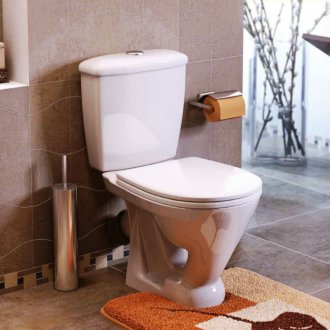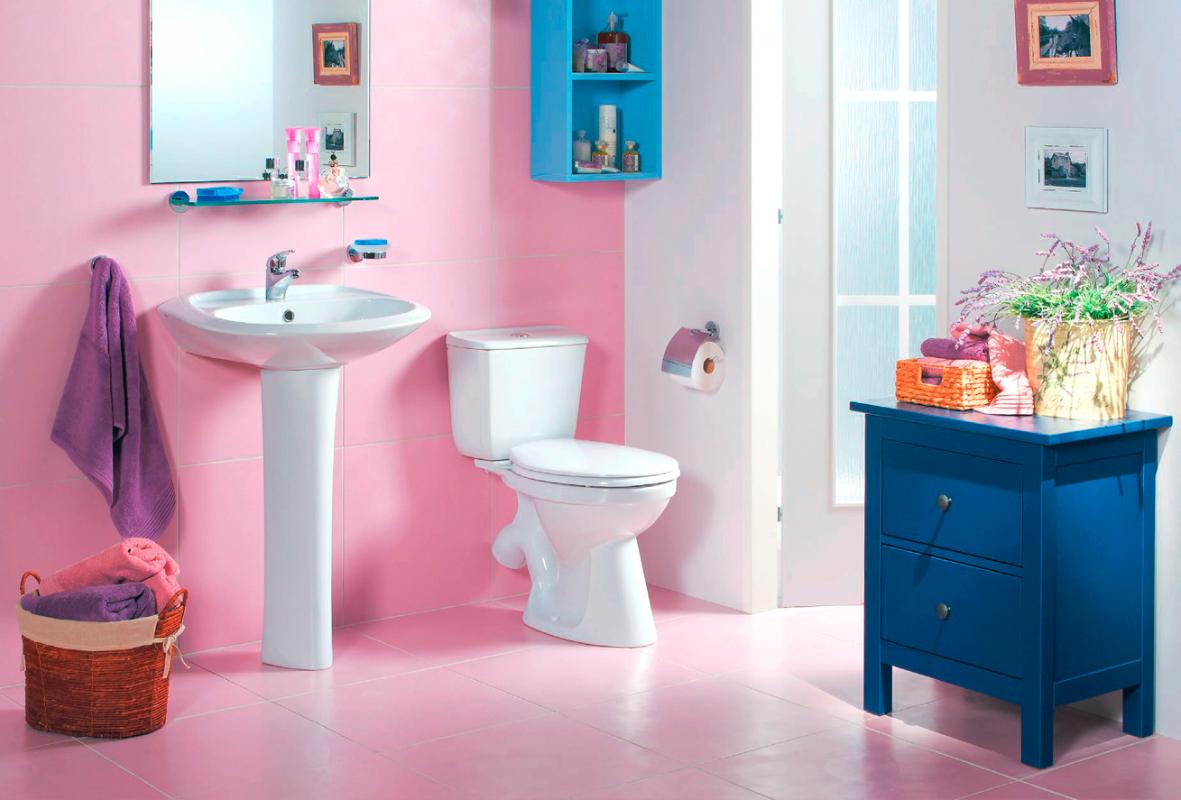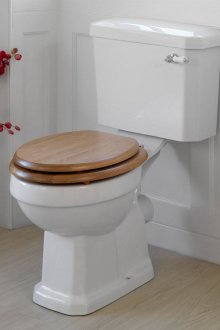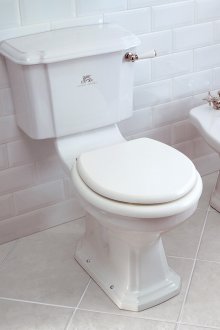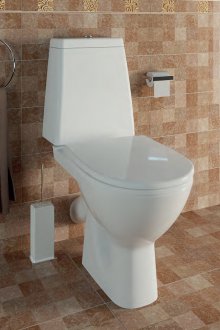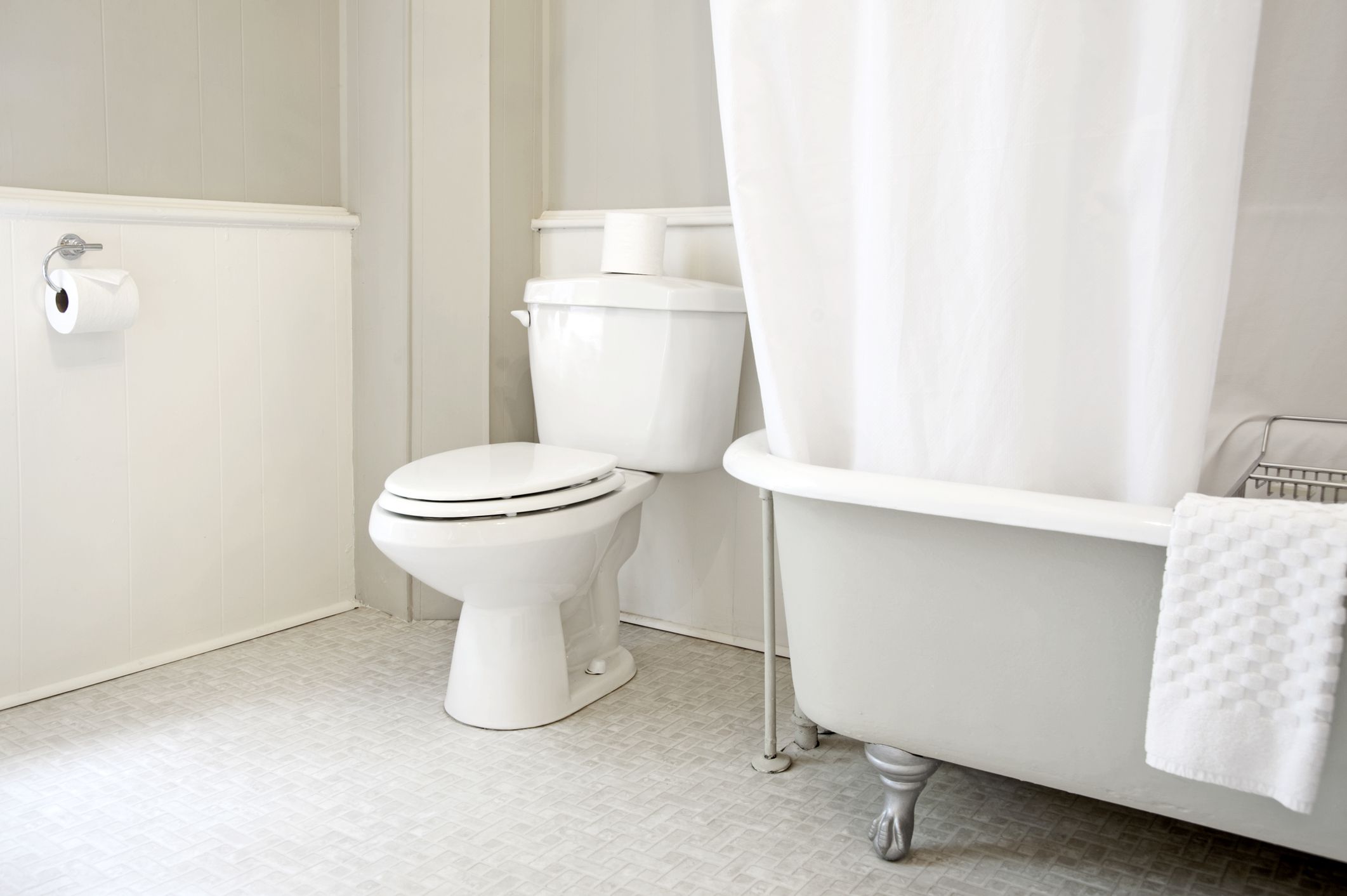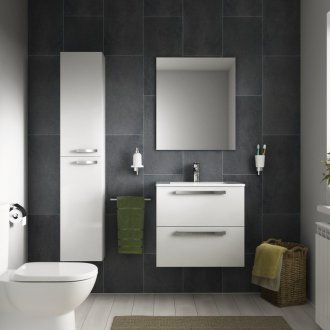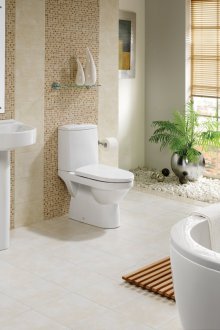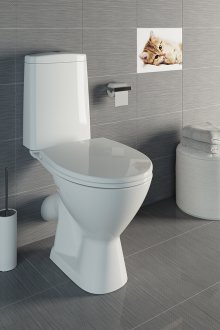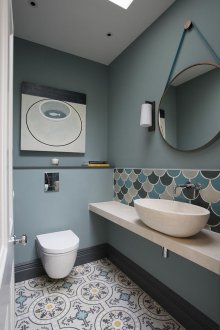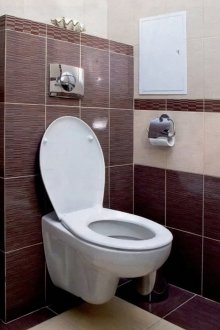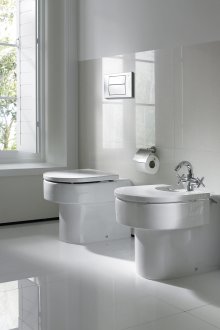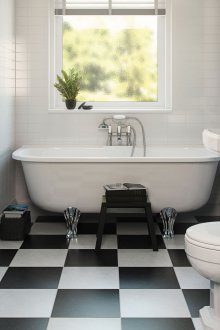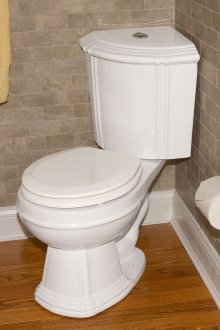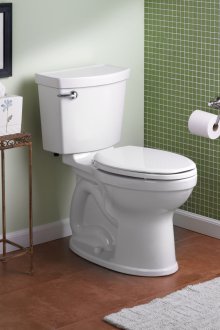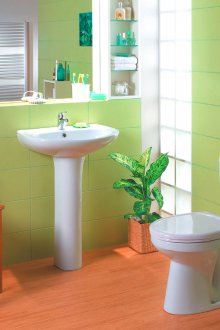Oblique toilet bowl: design features and advantages (21 photos)
Content
There are more than enough options for the toilet that you can choose on the modern plumbing market. On the one hand, it certainly pleases, but, on the other hand, it creates a choice problem for the buyer. Of course, he would like to get acquainted with the rating of toilets in order to choose not just a good, but, preferably, a better toilet. However, given the huge number of models of such equipment for toilet rooms, it is not difficult to choose and get lost in such a variety. Compiling a rating of toilet bowls is a difficult task and can be considered correctly posed only if it is known exactly what a particular consumer needs, what financial opportunities he has, and what his living conditions are. In order not to spend too much time thinking about choosing the right system, first of all, the buyer should familiarize himself with the difference between a toilet bowl with a compact tank and a toilet bowl with a monoblock tank, or what is the difference between a circular flush and a direct flush, or what is better - an oblique or vertical outlet etc.
What are the varieties of toilets?
First of all, this equipment is divided into various types, taking into account:
- The shape of the bowl, which can be funnel-shaped, visor or dish-shaped.
- Type of flushing (straight or circular).
- The design of the outlet into the sewer, which can be horizontal, vertical, oblique.
It should be noted that connecting a toilet with an oblique outlet in most apartments of the Russian Federation is not a very difficult task, since it is the angular outlet, also called oblique and usually carried out at an angle of 45 °, that is the Russian standard for standard bathrooms.
Toilet seat material
So, for example, these plumbing products can be:
- steel;
- cast iron;
- stone;
- glass;
- plastic;
- ceramic.
As for ceramic toilets, they, in turn, can be porcelain and earthenware. Faience is a ceramic material with a finely porous structure. Faience products are usually coated with enamel to prevent moisture, dirt, and odors from entering the pores of the product. It must be understood that the resistance of faience sanitary ware to pollution is ensured only due to protective enamel. Typically, the cost of earthenware toilets is relatively low, so their sales rating is very high. With careful use of earthenware fixtures, good coating quality can be maintained for decades.
The manufacturing technology of porcelain products is more complicated and more expensive than the same ones from faience. This explains the higher cost of porcelain toilets. However, this justifies itself, since porcelain sanitary ware is not hygroscopic and does not absorb dirt into its surface, therefore it is easier to maintain its cleanliness than in the case of earthenware.
But it is not right to think that a toilet bowl from faience does not last long. True, if earthenware plumbing will retain its high qualities, for example, for about twenty years, then porcelain, at least, is half a century.
Mounting method
There are floor and side toilets installed on the floor, and there are hanging.
Option for securing and positioning the tank
So, for example, distinguish:
- toilet bowls with tanks distant at some distance from them;
- compact toilets in which the tanks are attached directly to them;
- toilet bowls monoblock;
- toilet bowls with hidden tanks;
- toilets without tanks.
The latter type of toilet is a relatively new type of sanitary equipment, most often used in public toilets. In this case, the water for discharge is supplied directly from the pipeline, and the flow rate is controlled by a mechanical valve, often controlled by an electronic circuit.
Installing a toilet with an oblique outlet
The outlet tilted at an angle, in comparison with its other types, creates a smaller resistance to passing sewage. As a result: such toilets are rarely clogged, and, therefore, less often there is a need to clean them. In addition, installation, for example, of a toilet bowl with a compact type cistern, is simpler if the connection of this compact with a sewer network is made at an angle, but for this, of course, such a toilet bowl with a cistern must have an oblique outlet.
The following is information that may be useful for those who are interested in how to install a toilet with an oblique outlet yourself. And, in particular, a toilet bowl with a compact tank, which has the highest sales rating almost everywhere. Install such plumbing, mainly using one of the three methods described below.
Direct connection
This method can be used only if all the axes of the output and input sockets ideally coincide, and you do not have to move the fixed plumbing to achieve this. It is important here at the very initial stage to correctly calculate everything so that after connecting the toilet to the sewer, it can be correctly and reliably fixed (without shifts) on the floor. With a direct connection, it is used to connect the toilet to the sewer cuffs, which can be different: its shape and type of necessary sealing gaskets depend on which pipes of the sewer network are plastic or cast-iron? In general, everything is simple if the correct calculation of the position of the toilet attachment points was made: you need to smear the toilet outlet with a soap solution or shampoo, and then push it into the hole of the cuff installed before. Then it remains only to securely fix the toilet on the floor.
Using an eccentric
In this case, a bell with an installed gasket and an eccentric inside the outlet are used, by rotating which one can achieve a coincidence of the toilet outlet with the sewer inlet.
The use of an eccentric makes it possible to connect the toilet to the sewer even if there is a slight discrepancy between the axis of the toilet outlet and the axis of the inlet of the socket coming from the sewer.
With corrugation
The eccentric, which was mentioned above, makes it possible to mount the toilet in the presence of relatively small displacements (up to five centimeters in both directions), but the use of corrugation provides much more possibilities, allowing, for example, even to turn the toilet bowls 90 ° relative to the sewer socket. Although this method is cardinal, it is used only when connection using the first two methods is not possible.
If you decide to purchase a toilet with an oblique outlet, we recommend that you first pay attention to compact type toilets with the highest sales rating. We also recommend that you first of all pay attention to those companies that take into account Russian standards for connecting plumbing to sewers and provide a guarantee for their products.And if you want to figure out how to connect the toilet you bought yourself, do not forget about the existence of the Internet, in which you can find not only a lot of useful tips, but even videos that clearly and clearly show what and how to do.

